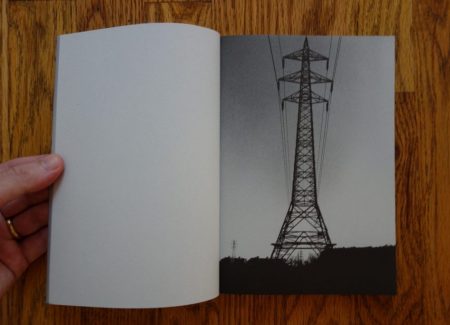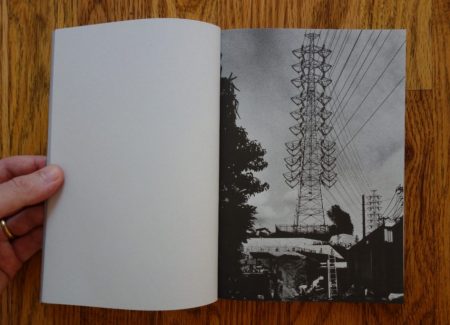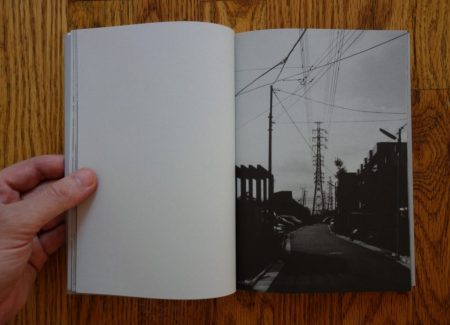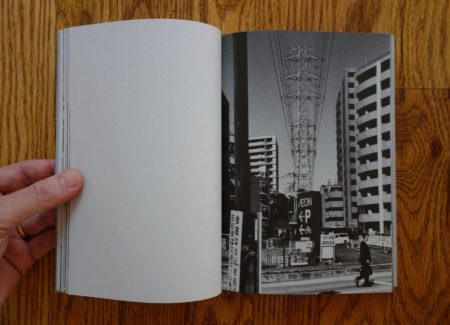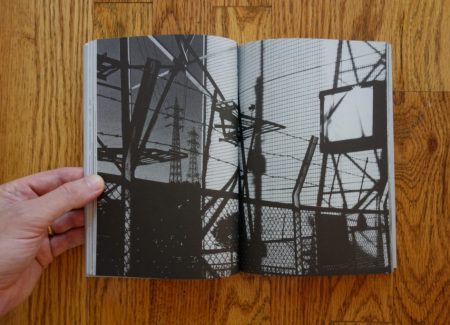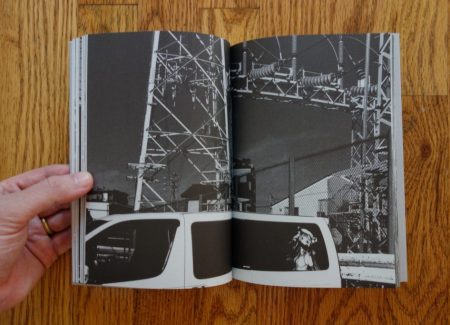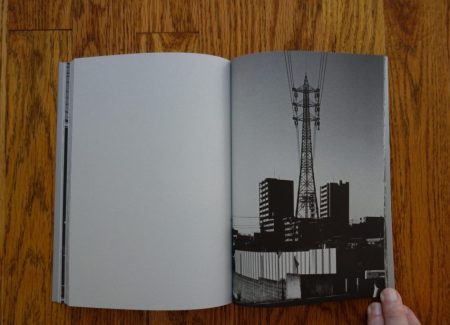JTF (just the facts): Published in 2016 by Nippon Camera/N Books (here). Softcover with overflap, 128 pages, with 84 black and white reproductions. In Japanese, but with no texts or essays. (Cover and spread shots below.)
An earlier version of this body of work was published by Wall Books in 2006 (here).
Comments/Context: Electric towers are the kind of ever present industrial architecture that often seems to merit little notice. In countries the world over, massive metal structures march across the landscape and slash though forests, bringing essential power to cities and towns from far away electric generation plants and power stations. And even though these spindly behemoths interrupt our vistas stringing thick wires across our skies, we somehow seem to forget them, as though our eyes could remove their physical intervention from our active attention. They are there and not there, a looming presence above us, but largely overlooked in our day to day hustle.
Definitionally, Yukikazu Ito’s Tetsuo might easily be characterized as an obsessive photobook typology of Japanese electric towers. And indeed, it’s a never ending stream of images of this technical infrastructure, each picture an opportunity to compare and contrast the various architectural forms, geographic sitings, and geometric patterning of countless tower examples.
But a closer look reveals that these photographs have an entirely different mood than the rigorous isolated views of this kind of architecture made famous by Bernd and Hilla Becher. They’re much darker and more ominous, and many bring in multiple layers of surrounding context, from passing cars and pedestrians to apartment blocks and skyscrapers. Ito’s compositions are consistently complex, with sophisticated foreground disrupters like poles and fences flanked by the tangled structure of streets, buildings, and intersecting wires.
In Japanese, the word tetsuo means “iron man”, and for some, it will bring to mind the 1989 cult film Tetsuo: The Iron Man directed by Shinya Tsukamoto. It’s a classic of expressive techno-horror, shot in shadowy back and white, with a surreal fantasy story of a Metal Fetishist and a invasive disease that turns human flesh into iron (including a memorable transformation of a penis into a fiercely rotating drill).
And with this cultural touchstone in mind, Ito’s electric towers seem to take on hybrid human characteristics, like mutated Godzillas threatening to overun the nation. Angled metal arms spread like avian wings and heavy pylons thunder like stamping feet, the build up of pictures starting to feel energetically claustrophobic (they’re everywhere!) – by the end of this small volume, the electric towers seem inescapable, an army of machined invaders bent on total domination.
Paper choice makes an important difference in the construction of this photobook – the images are printed on cheap newsprint, with a light grey cast, and the sharpness of the pictures is softened by its grainy roughness. This paper makes the pictures feel passed down or stolen, like elusive evidence of UFO sightings or illicit transactions, shared here for those who know the truth.
That Ito could bring so much nuance and emotion to a topographical study of electrical towers is a testament to his ingenuity. This is a quietly satisfying photobook, with a uniquely Japanese cultural resonance, and one that has all the hallmarks of a subtly well executed word-of-mouth classic.
Collector’s POV: Yukikazu Ito does not appear to have gallery representation at this time, so interested collectors should follow up directly via his website(linked in the sidebar).

